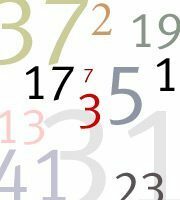Essential Parts of Written Work
Drafting / / July 04, 2021
The 3 essential parts of the written work are:
1. Beginning
It is also called introduction or exordium, depending on its characteristics or the type of work. In journalistic writing it is of primary importance to get the attention of the reader, frequently superficial or hasty, and is often called "pompadour" when it contains a summary of what is expressed in detail later.
Because it is the entrance to the writing, the principle must open the doors of the reader's mind in the most appropriate way: attracting him through interest, curiosity, the synthetic, inconclusive or suggestive presentation, the feelings, or any of the stimuli that applied psychology mentions as adequate for this case.
As your objective is to attract the recipient, in this introductory part any element that may be shocking or difficult for him, so that he can gladly enter the core of the written.
2. Half
Also called body, knot or exhibition, it is the fundamental part of the writing. Here the basic issue is exposed, with all the arguments and data necessary to fulfill the fundamental objective: inform, teach, analyze, ask, exhort, stimulate, entertain, direct or be the vehicle of social, commercial, administrative, cultural or any other kind of relationships within the multiple activity human.
As the mission of this part is to fulfill the fundamental objective of the writing, the effectiveness of its realization will be the greatest factor in the success of the work.
3. End
Also called an epilogue or closure, it must be an adequate crowning of the medullary part. In general, their mission is to reaffirm or summarize the above. It can also contain recommendations, wishes, comparisons, reminder data, thanks or secondary mentions of a different nature.
As a finishing touch to the writing, it must be structured in such a way that it is a natural or logical consequence of the above (although it is not rule out unexpected or open endings, in certain types of works that, without being literary or artistic, admit a certain dose of originality and expressive freedom, such as commentary or critic articles, sales letters, advertisements and writing Similar.
The end, the last impression that remains in the mind of the reader, must worthily fulfill its mission of closing the writing.


